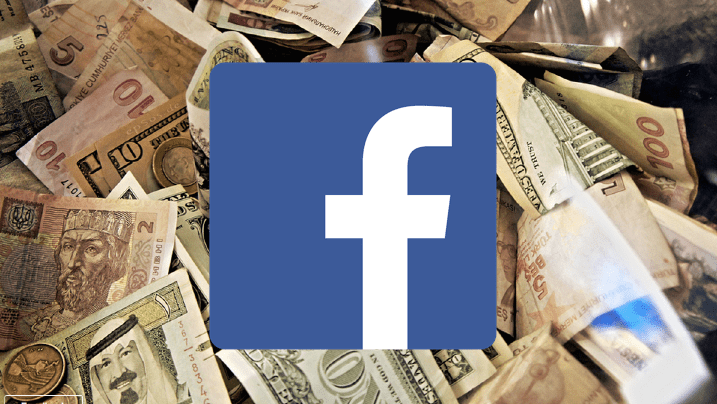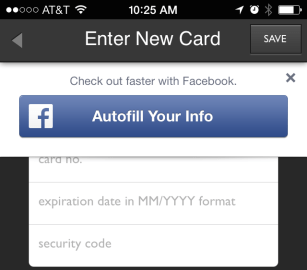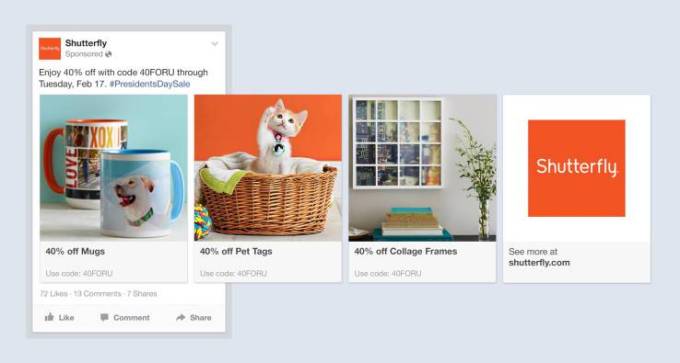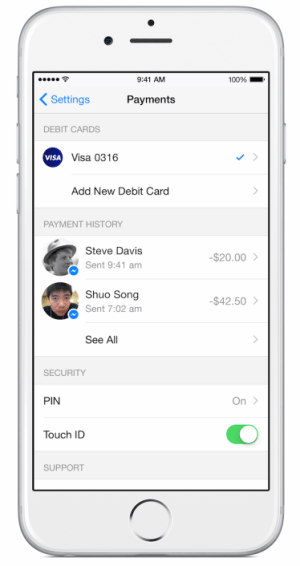 What if buying something was as easy as Liking it? You’d
probably buy a lot more, and buy it through whoever made it so damn
simple. Becoming that conduit for payments means more than racking up
transaction fees. For the portal to purchase influences not just how you
buy, but what.
What if buying something was as easy as Liking it? You’d
probably buy a lot more, and buy it through whoever made it so damn
simple. Becoming that conduit for payments means more than racking up
transaction fees. For the portal to purchase influences not just how you
buy, but what.
Today, purchases are fragmented, and so too is that
influence. We buy online and offline. Cash, Credit, PayPal, and now
Apple Pay. In turn, influence splinters into ads run on television,
print, digital, billboards, and other channels. Whether we want
something already or not, the ads are supposed make us more intent on
actually spending our money.
But there’s a disconnect. A gap between the intent and the
purchase. A hole in the funnel where conversions leak out. There’s
friction.
And Facebook hates friction almost as much as it loves
connection. Eliminating unnecessary steps is almost gospel at Facebook,
preached from the product all the way up to the person in charge. Mark
Zuckerberg wears a grey t-shirt almost every day to remove the friction
of deciding how to dress so he focus elsewhere. Facebook split Messenger
off into its own app to save you one extra click on the Messages tab.

Facebook explains its goal to speed up ecommerce purchases at F8 2014
Now Facebook has set its sights on making money simple too.
Last month, Facebook introduced payments to Messenger.
In any messaging thread, you’ll be able to tap a “$” button, enter how
many dollars you want to send, and instantly transfer that money to a
friend.
That’s useful, but it’s probably just the start.
With the new Messenger feature, Facebook added an easy way
to connect a debit card to your account. Before, it let you connect a
credit card, debit card, or PayPal account to buy ads or virtual goods
in games. But now Facebook has a mobile-first, zero-fee payments system,
complete with passcode protection and a transactions history, all baked
into Messenger.
What Facebook does with payments over the next few years could redefine its business.

Retailers Crave Connection Too
Recently, Facebook has strengthened its relationship with
merchants. Rather than keep them at arm’s reach as external entities,
its starting to treat retailers a bit more like people.
 Facebook began work a few years ago on a feature called “Auto-Fill”.
When you went to make purchases in some partnered ecommerce apps and
mobile sites, an “Auto-Fill With Facebook” button would appear. Tapping
it would fast-switch you into Facebook, then instantly switch back to
the store having pulled payment information you had on file with
Facebook already. All the billing and shipping info would be
automatically populated so you could quickly confirm the purchase
without doing a ton of typing.
Facebook began work a few years ago on a feature called “Auto-Fill”.
When you went to make purchases in some partnered ecommerce apps and
mobile sites, an “Auto-Fill With Facebook” button would appear. Tapping
it would fast-switch you into Facebook, then instantly switch back to
the store having pulled payment information you had on file with
Facebook already. All the billing and shipping info would be
automatically populated so you could quickly confirm the purchase
without doing a ton of typing.
It’s also been experimenting with a “Buy” button
for its commerce ads. The idea is that you could checkout in-line from
the News Feed rather than having to leave Facebook to complete your
purchase on a third-party site. This cuts out a big step from the
conversion funnel, giving buyers fewer chances to change their mind and
dump their shopping cart.

In February, Facebook launched a new ad unit for ecomerce. These product ads
let businesses show off several specific items for sale, instead of
just one or the retailer as a whole. This mirrors Facebook push to let
people share richer content over the years, from multi-shot photo
stories, to Instagram Layout collages, to auto-play video.
Facebook also acquired personalized shopping search engine TheFind
last month. This levels up Facebook’s ability to tune what products are
most relevant to which users. Those product ads could get better
targeting. Facebook could help a sporting goods retailer show a yoga mat
and sneakers to someone interested in hippie stuff, but then the same
sneakers paired with bicycle shorts to an avid cycler that lives in a
more rural area.

Facebook’s new multi-product ads
Just a few weeks ago, Facebook revealed its most ambitious
plan yet to make retailers feel like your friends. It plans to let you
message with them. The new Messenger For Business
platform previewed at Facebook’s F8 conference will let users making
ecommerce purchases to connect with the merchant over Messenger. There,
they could get receipts, request changes to an order, or receive
customer support in a single message thread rather than a slew of
separate emails.
Each of these moves could make Facebook a better portal to
commerce, which could attract ad dollars and teach it more about what
people want to see so it can tune its News Feed.

Frictionless Commerce
 But
what’s especially worth pondering is what happens if Facebook becomes
the way you actually pay for these purchases. Suddenly, having a
mobile-first way to swallow up credit card numbers in Messenger has
potential far beyond friend-to-friend payments.
But
what’s especially worth pondering is what happens if Facebook becomes
the way you actually pay for these purchases. Suddenly, having a
mobile-first way to swallow up credit card numbers in Messenger has
potential far beyond friend-to-friend payments.
For purchases on third-party sites and apps, Facebook
could let you auth in and process the transaction for you. No more
typing your payment details again and again. Handling receipts, changes,
and support through Messenger would be a natural extension.
Even more important could be how becoming a payments
system could turn commerce ads on Facebook into full-fledged storefronts
where you can buy and checkout without ever leaving the social network.
It could take time to come to fruition, but if the company
seizes on the opportunity, buying something on Facebook could go from:
- See a Facebook ad for a store or single product
- Click through and wait for the storefront to load
- Select what you want to buy
- Manually type in your payment and shipping information
- Complete the checkout process
- Get an email receipt
- Email or phone to make any changes
- Get an email shipping confirmation
To:
- See a relevant, specific product in a Facebook ad targeted to you
- Tap the “Buy” button
- Confirm the purchase as your payment info has been auto-filled
- Get a single Messenger thread with your receipt and confirmations where you can chat to make changes
After traditional ecommerce product retailers, Facebook
could turn its new purchase flow on utility services. China’s WeChat
lets you book taxis and buy movie tickets from within its messaging app.
As I wrote when I reported a week before F8 that Facebook would launch a
Messenger platform, first up is content apps for richer sharing and
customer-to-business chat. But sources tell me that if Facebook likes
how these phases of the platform go, it’s looking into building in
simple ways book services like on-demand taxis.
With less friction comes more buying. We’ll
have to wait if Facebook monetizes its identity layer in commerce just
by selling ads, or potentially by collecting data insights on purchasing
trends, or even scoring a share of sales revenue.
But as long as Facebook can dangle more sales in front of retailers, they’ll make it richer somehow.